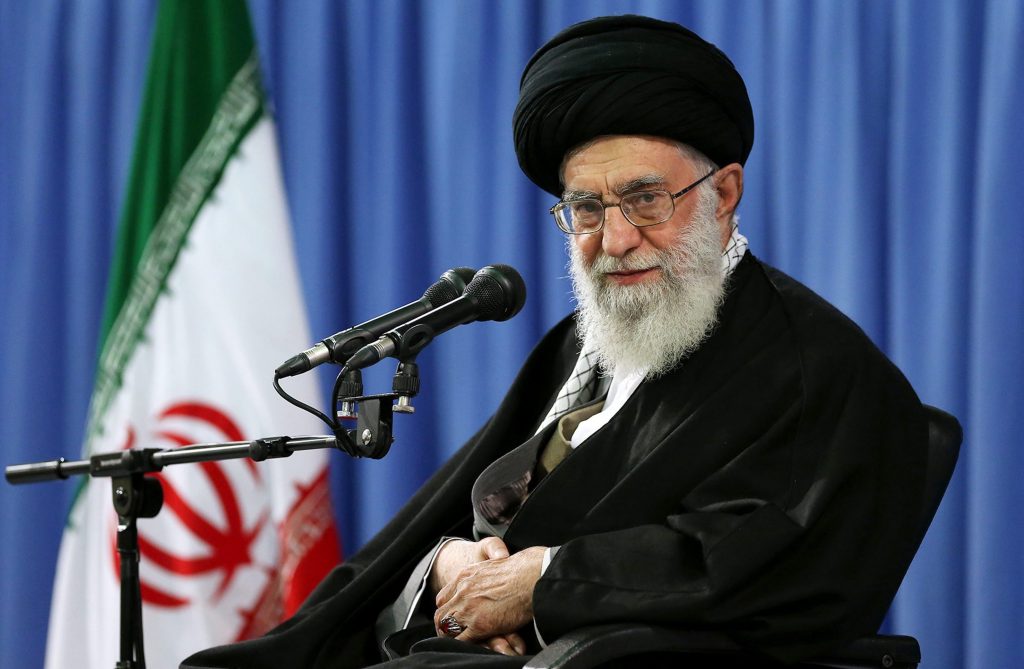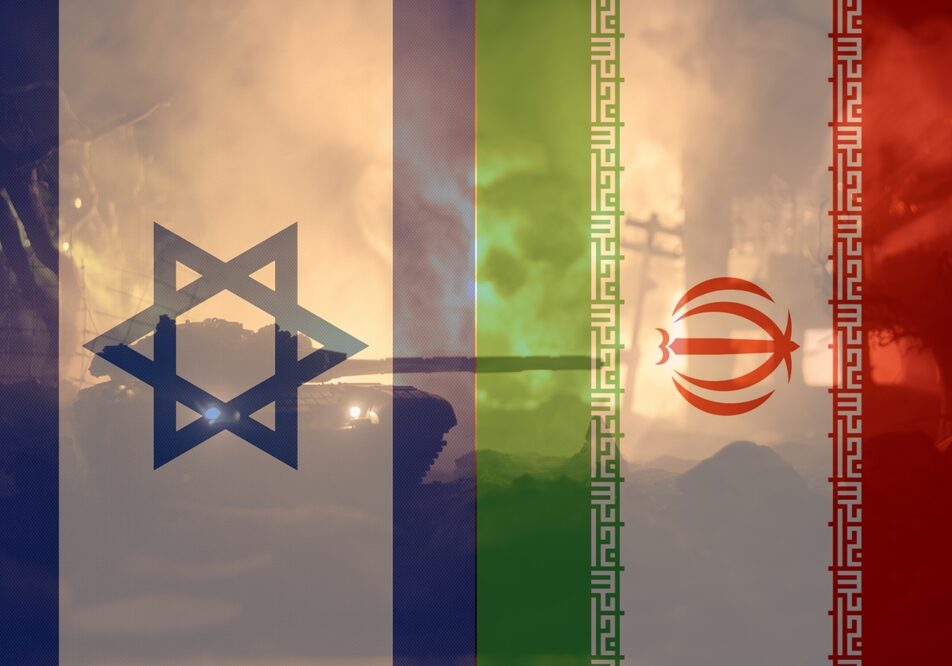Australia/Israel Review
Appeasing Khamenei was the real aim of the JCPOA
Aug 6, 2019 | Ran Porat

Iran’s secret endeavours to build nuclear weapons and the means to deliver them were exposed almost two decades ago. Since then, the international community has been struggling with how to address this dangerous development. The need to curb Iran’s ambitions was widely accepted in order to avoid disruption to the regional balance in the Middle East and to world order.
Eventually, two strategies were applied.
The first was an extensive campaign to cause damage to and slow down’s Iran’s nuclear project via various methods. Openly, sanctions were imposed on people and companies involved in the project and increased monitoring was placed upon Iran’s known atomic activities. Secretly, cyber warfare was used – such as the famous Stuxnet computer virus which caused heavy damage to uranium enrichment at Iran’s Natanz plant. Other methods included selling faulty or “infected” parts to Iran’s nuclear facilities, or the sudden death via unnatural causes of a number of key Iranian nuclear scientists.
Publicly, the leading strategy chosen was coercive diplomacy – a combination of engagement and the threat of force to drag Iran to the negotiating table. The first leg of this effort included direct engagement with Teheran, originally by the EU 3 (France, the UK and Germany) and later also by China, Russia, the UN, and finally the US.
To complete the coercive element of the strategy, the diplomatic interaction had to be accompanied by credible threats of military action.
Until a few years ago, Israel was almost alone in hinting about a possible military attack against Iranian nuclear infrastructure. The credibility of intimidatory messages from Jerusalem towards Teheran was bolstered by Israel’s history of pre-emptive strikes on nuclear reactors in enemy states before they became operational – in Iraq, in June 1981, and in Syria, in September 2007.
The result of this coercive diplomacy strategy was a series of agreements between the West and Iran. Yet, these deals were broken time and again by the Iranians, and in doing so, Teheran was repeatedly able to improve its opening position in the next round of negotiations which followed.
Frustrated by this pattern, and possibly considering his legacy during the twilight years of his presidency, then US President Barack Obama guided his Secretary of State, John Kerry, to strive for a resolution of the Iranian problem.
This was the background for the negotiations on the Joint Comprehensive Plan of Action (JCPOA), agreed upon in 2015. The startling fact about those negotiations is that all parties (Teheran included) knew that Iran was lying. No one believed the Ayatollahs’ denials that they were seeking nuclear weapons, because they had the intel, indisputable although incomplete, proving the opposite.
Years before the JCPOA talks, Western leaders were fully aware of the secret AMAD project to produce a nuclear weapon, and how it was restructured in late 2003 to continue, even today, under the rubric of the Organisation of Defensive Innovation and Research (SPND). These facts were recently reconfirmed and strengthened by the material in Iran’s secret nuclear archive, nabbed from Teheran by Israeli agents in early 2018.
Yet, all JCPOA signatories deliberately choose to ignore the blatant Iranian lies, as well as to leave off the table Iran’s development of ballistic missiles able to carry a nuclear payload, and Teheran’s involvement in both terrorism and international criminal activity.
The key question is – why did the negotiators opt to disregard or downplay these central issues? Recently, reliable sources that were in the know at the time privately revealed the core reasons for this choice, and the real rationale behind the JCPOA in Washington and other western capitals.
In the following paragraphs, their description of the essential logic of the JCPOA will be revealed publicly for the first time.
Carrots in exchange for a nuclear freeze
The main idea behind the JCPOA was to “normalise” relations with Teheran in order to appease and moderate its supreme leader, Ayatollah Ali Khamenei. This way, thought the negotiators, the all-powerful Khamenei would be persuaded to give the order to freeze works on nuclear weapons, at least for a while.
To increase the appeal of such a move, Iran was promised a hefty and handsome bundle of “carrots”, as long as it complied with the agreement. These gifts included billions of dollars from accounts frozen under previous sanctions against Teheran, lucrative business deals to lift Iran’s ailing economy and other substantial benefits. The biggest prize was a gradual rehabilitation of Iran’s international status, from a pariah state to an acceptable member of the world community.
The technical details of the agreement were supposed to confine Iran’s breakout period – the time it would need to achieve the bomb if it decides to withdraw from the deal – to not less than 12 months. Then UK Foreign Minister Jeremy Hunt recently reconfirmed this when he said that: “Iran is still a good year away from developing a nuclear bomb”. A year, thought the architects of the JCPOA, would be enough time to detect, act on and hopefully stop any renewed progress in Iran toward constructing nuclear weapons capabilities. Furthermore, JCPOA negotiators assumed that if Iran breached the deal it would grant greatly heightened legitimacy for any and all actions – diplomatic, economic, or even military – against the nuclear project.
The crippled coercive leg
In hindsight, the parties devising the JCPOA overlooked crucial loopholes in the deal, which transformed the end result, and explain why the agreement fell disastrously short of achieving their own goals.
The first loophole was the shift in discourse about Iran’s blatantly illegal nuclear program from “violations” to “rights”. Article 4 in the agreement preamble states that “Successful implementation of this JCPOA will enable Iran to fully enjoy its right to nuclear energy for peaceful purposes.” This is a big win for the Ayatollahs as it immediately changes the debate from Iran’s illegal pursuit of nuclear weapons to the alleged “right” to nuclear energy derived from the Nuclear Non-Proliferation Treaty (NPT).
In addition, all scrutiny of Iran’s illegal nuclear activities, aka the “Past Military Dimensions” file investigated by the International Atomic Energy Agency (IAEA), was no longer to be pursued once the JCPOA was implemented. In other words, the question of whether or not Teheran had lost this right to peaceful atomic energy under the NPT – especially domestic uranium enrichment – because it had been caught red-handed in the midst of producing nuclear weapons in violation of the NPT, was essentially ruled out of bounds, potentially even in future negotiations.
The second JCPOA flaw was the inability to effectively provide any coercive leg for the Western strategy. The JCPOA forbade any punishment of Iran for deal violations except complete cancellation of the entire agreement, something Western governments were always going to be reluctant to implement except maybe in the case of the most blatant Iranian cheating on a large scale.
In May 2018 President Donald Trump withdrew the US from the JCPOA and imposed strong economic sanctions on Iran, which have since been strengthened and widened periodically. By doing so, the US is now the only original party to the JCPOA effectively invoking the coercive element of any strategy on Iran. Trump’s stated aim is to force the Ayatollahs back to the negotiating table, this time to address the topics left out of the JCPOA.
The impact of the US sanctions on Iran’s economy has been striking, and Teheran has chosen to react by engaging in graduated brinkmanship. So far, the Iranian response includes attacking tanker ships in the Gulf to increase oil prices and to demonstrate an ability to disrupt the international oil trade, shooting down a US drone to try and provoke the US into retaliating militarily (Trump wisely resisted the temptation to do so), and breaching JCPOA limits on levels of uranium enrichment (3.67%) and the stockpiling of enriched uranium (300kg).
Other JCPOA signatories, most notably the Europeans, have panicked. Caught between an American rock and an Iranian hard place, they have diligently tried to save the deal, for example, by setting up a mechanism designed to help Iran circumvent US sanctions. But so far, these efforts have been to no avail.
Now that Iran is openly breaching the agreement, the Europeans are called upon to at least put into effect their own sanctions. But they aren’t, exposing themselves as paper tigers whose fear of conflict and of using power as part of their coercive diplomacy robs their pronouncements of any credibility.
The final and the most critical failure of the JCPOA is the inability to reliably guarantee the one-year breakout time buffer.
Documents recovered from Iran’s secret nuclear archive conclusively prove that Teheran has been in breach of the deal since the beginning.
In fact, Iran never actually stopped efforts to progress towards a nuclear device. Not disclosing the archive – a complete guidebook to managing and running a project to build a nuclear bomb – to the IAEA was itself a direct violation of the JCPOA and of the NPT.
Another example is Iran’s broken promise under the JCPOA to redesign and repurpose the underground Fordow facility, which was originally built to enrich uranium to military-grade levels (90%).
Instead, recent reports say that a new area on the site has begun producing pressure transducers – a key part of uranium enrichment centrifuges which Teheran is not allowed to procure.
There are many similar examples of blatant breaches.
Former IAEA deputy director general Olli Heinonen has examined Iranian archive documents over the last few months. Based on his research and wide experience, including as chief monitor in Iran, Heinonen has determined that currently, if the Supreme Leader gave the order to go ahead, it might take Iran only a few months – not a year – to amass enough weapons-grade fissile material to create an atomic warhead. Once Iran is in that position, it becomes a whole new ball game, as no one knows how fast they could assemble a bomb and mount it on a long-range missile.
The only way to prevent this dangerous scenario, in which Iran effectively becomes a nuclear threshold country almost overnight, is to join the American campaign to increase the pressure on Iran, and to provide credibility to the enfeebled coercive leg of the diplomatic efforts. A new nuclear deal must be the target of this effort, and must also address the critical new information about the full scope of Iran’s nuclear project available through the archive materials.






